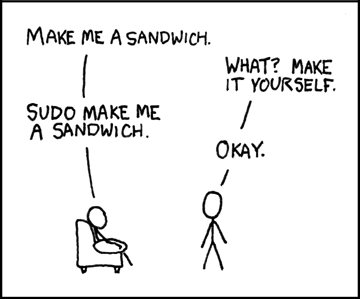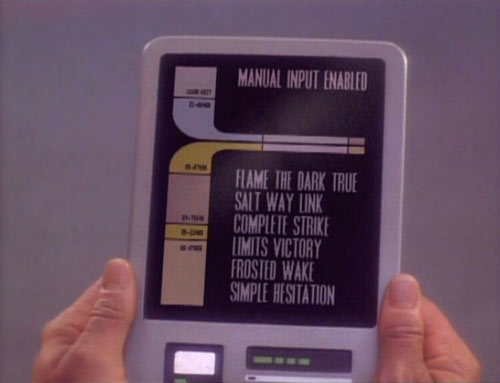Philosophy
Hackable software is an approach to write, maintain and distribute minimal programs for personal use.
Software is:
- doing not more and not less than what the user needs
- made for users capable of reading and customizing its source code
- distributed as source code, compiled by the user
- not meant to be developed forever and its final state should be described by its feature set from the beginning
- extended either by the user directly, or by applying source code patches distributed as diff files
Now… let’s start from the beginning.
What is hacking
[originally, someone who makes furniture with an axe]
But today we will not be talking about carpenters, MIT hackers, or security researchers. But rather:
1. A person who enjoys exploring the details of programmable systems and how to stretch their capabilities, as opposed to most users, who prefer to learn only the minimum necessary. RFC1392, the Internet Users’ Glossary, usefully amplifies this as: A person who delights in having an intimate understanding of the internal workings of a system, computers and computer networks in particular.
2. One who programs enthusiastically (even obsessively) or who enjoys programming rather than just theorizing about programming.
UNIX vs Enterprise
One can seemingly categorize all software in the world into programs that can do everything and programs that do only one thing.
Every program attempts to expand until it can read mail. Those programs which cannot so expand are replaced by ones which can.This is a natural process in a commercial setting where more features mean more customers and more money. But this is not the only way.
There are programs that were designed to do one thing and do it well. You might know some of them, and most likely because they were originally a part of a UNIX operating system in the ’70s. I’m talking about command line utilities such as ls, cat, sudo, etc.
 XKCD-149
XKCD-149
The idea behind these minimal, modular programs is now known as Unix philosophy:
- Write programs that do one thing and do it well.
- Write programs to work together.
- Write programs to handle text streams, because that is a universal interface.
Software cafeteria
In context of hackable software, it’s important to notice that likely all software you use can do more than you need from it. Commercial software is designed as food in a college cafeteria - nobody particularly likes it, but it’s the best common denominator.
And minimalist Unix software won’t help there much, because on their own such tools are not very powerful - power emerges when they are combined together (output of one is input of another) to solve non-standard task. In this analogy simple programs are ingredients and in hands of a great cook they become a tasty meal.
 Russian school kitchen, pots (likely) with black tea
Russian school kitchen, pots (likely) with black tea
How would a software from a fine dining restaurant look like? Building software for personal use of a single wealthy client is not a real thing, so it seems like we have to rely on big companies with lots of money and smart engineers to make good programs that would fit every user at once.
Wait, home cooking! It’s a big thing, but making custom programs from scratch is hard. The amount of foundational knowledge needed to write and understand the first ever line of code is monumental. More approachable way would be to rely on simple programs to do the heavy lifting and combine them to produce something meaningful. Brian Kernighan mentioned it in a recent talk about the history of UNIX, how powerful combination of a simple programs can be in the right hands. As an example, this command can be used to forcefully stop application conky:
This is a great starting point to gradually explore the world of programming, along with visual scripting and problem solving games.
Profession vs passion
When I was deciding what career path to choose I thought that every programmer is as passionate about computers as I am - writing small programs/games, consuming videos/podcasts/talks/posts in the free time. Turned out a vast majority of programmers primarily do it because it is one of the highest paying jobs. And their interest is not in learning something cool about computers, but how to climb the career ladder, stay in the loop with demanded skills needed in the resume, and coming up with a novel business idea to become a successful CEO and make millions.
Too bad social media makes no distinction between the two, especially considering that the biggest hacker community is a daughter product of a venture capital startup accelerator. While I understand the desire of making a fortune, there is often a conflict of interest between making a good product and making money, resulting in enshittification.
I believe that making software with love and of goodwill would be net-positive for the hacking community. Rest of this post assumes you would like to write (or contribute to) software for yourself, friends, and other hackers.
Customizability
Software customization can be provided on multiple levels (desc. by user experience, asc. by capabilities):
- UI settings
- Configuration files
- Mods/plugins
- Source code patches (differ from the latter by requiring no reading by the user, as in “just apply a patch”)
- Source code changes
There is no way to provide better customizability than via source code modification. This of course has a couple of asterisks (will get to it in The bad section), but in the context of software for hackers fits well.
Note that configuration via editing source code does not mean that everything is hardcoded and statically baked into the executable. Customization might include a new command line argument or even an external configuration system (although going against doing not more and not less than what the user needs). In practice, a programming language is superior to any configuration file formats such as json or yaml. Zig build system is a great example of that.
Suckless
The idea of tailoring programs to your own needs is not new. Most notable examples include programs released in 2006 by Suckless community: X11 window manager dwm, terminal emulator st, menu utility dmenu and others.
What distinguishes suckless software from other personal use programs developed today is that configuration is done directly in the source code, giving ultimate customization freedom.
So what is hackable software
Hackable software is the idea of writing programs for hackers. Let’s expand on the principles a bit.
Software is doing not more and not less than what the user needs
Every feature is implemented in the most simple and straightforward form: keep it simple, fast, and clear. It’s easier to protect simplicity when additional functionality is out of scope.
Software is made for users capable of reading and customizing its source code
It’s great when source code can be read and understood by the user in one evening. User manual documentation is not necessary, since concise code is better than plain text documentation. But hacking documentation is encouraged (via HACKING.md), providing help on building the program, high-level design overview, and other notes that would help grasping the code.
Software is not meant to be developed forever and its final state should be described by its feature set from the beginning
In many cases, code quality is compromised because of a wrong assumptions and dynamically changing requirements. Think about designing a bicycle not knowing it would be needed to make it a motorcycle along the way.
Software is distributed as source code, compiled by the user
Because users need to configure programs by modifying the source code, they need to have it in full. Also, please provide build instructions in case it’s not obvious from the build system config (npm run build or zig build or make).
Software is extended either by the user directly, or by applying source code patches distributed as diff files
Extending functionality is often hard and requires architecture changes, so it might be a good idea to not break it for all user, even those who don’t need it. So it makes sense to keep additional functionality optional by providing patches. It is also encouraged to share your extensions with others who can find it useful.
Evaluation
Hackable software: why would anyone use it, who is it for, and what are drawbacks
The good
For developer:
- Focus on core functionality. Don’t worry about very specific edge cases. Meaningful panic message is good enough for a user to fix it in case it happens to be relevant.
- Lots of complexity can be dropped. Forget about configuration file hell - user preferences are “hardcoded”. No need for packaging - responsibility is shifted to the user. Providing clear build instructions is a good idea though.
- Distribution is as simple as it gets. Link to the source code or a tarball is all that’s needed.
- Incentive to keep code concise and simple - many people gonna mess with it.
- Users are capable. More detailed bug reports, productive discussions, high-quality contributions.
- Less code means less exposure to vulnerabilities and bugs, less maintenance.
For user:
- No bloat. Program you get is simple and straightforward.
- Adding new functionality is as simple as it can be. Making changes to a 1K LOC codebase is a thousand times simpler than to a 1M LOC one.
- Native compilation. Since you compile it on your machine, compiler gets best hardware optimizations.
- Control. Having original source code means no one can take it back from you. Except if it it relies on external services/dependencies of course.
The bad
Like any approach, hackable software has its limits and drawbacks:
Does not work in enterprise setting. Software is not furniture to sell disassembled. This leaves hackable software for hackers: open-source enjoyers, programming hobbyists, and students.
Compile it yourself. You need to satisfy build requirements, such as having the right compiler and system dependencies. Not as bad as it sounds, because keeping software simple also means keeping build process simple. It’s possible to build software without meta build systems. It might be a good idea to use a programming language directly to describe a build process (build.zig or nob.h).
Only programmers could use your program. Hackable software is a bad approach to make commercial software, won’t work for a game you would want to sell on Steam.
Works well for executable programs, for libraries - not so much. Libraries need to have stable API to be generally useful and this is not feasible. Solution is to submodule a library into the project so that its source is controlled (not that uncommon in C/C++ land anyway).
Only computer users could use your program. Doesn’t seem feasible to modify and recompile programs on smartphones, gaming consoles, vacuum cleaners…
Not every piece of software can be small and concise. My favorite example is W3C browser specification, which is 114 million words long. Same would be true to other spec-dependent software: OS components, hardware drivers, embedded firmware. Does not imply that we should not try to keep it simple and not fight back against incidental complexity.
Software hackability how difficult to write from scratch │🮙🮙🮙🮙🮙🮙🮙🮙🮙🮙🮙🮙🮙🮙🮙🮙🮙🮙🮙🮙🮙🮙🮙🮙🮙🮙🮙🮙 Web browser │🮙🮙🮙🮙🮙🮙🮙🮙🮙🮙🮙🮙🮙🮙🮙🮙🮙🮙🮙🮙🮙🮙🮙🮙🮙🮙🮙🮙 OS │🮙🮙🮙🮙not worth it🮙🮙🮙🮙🮙🮙🮙🮙🮙🮙🮙🮙 │🮙🮙🮙🮙🮙🮙🮙🮙🮙🮙🮙🮙🮙🮙🮙🮙🮙🮙🮙🮙🮙🮙🮙🮙🮙🮙🮙🮙 │🮙🮙🮙🮙🮙🮙🮙🮙🮙🮙🮙🮙🮙🮙🮙🮙🮙🮙🮙🮙🮙🮙🮙 │🮙🮙🮙🮙🮙🮙🮙🮙🮙🮙🮙🮙🮙🮙🮙🮙🮙 Text editor │🮙🮙🮙🮙🮙🮙🮙🮙🮙 │🮙🮙 Terminal emulator │ App launcher │ ┌────────────────────────────┐ │ │ simple automation │ │ │ scripts │ │ └────────────────────────────┘ └──────────────────────────────────────── how often used and customizedCommon denominator does not exist. There might be programs for which picking the core functionality is really tricky, because every user’s workflow is very different. This might mean that such program wants to do too much. Anyway, use common sense when deciding what is considered core functionality and what not.
Maintaining patches is not much different from maintaining a program with all patches applied all at once. Facilitating factor is that it’s sometimes okay for patches to be broken (not applying cleanly), since resolving conflicts is much easier than writing featrue from scratch.
It still might not be for you. Messing with source code, building, resolving patch conflicts, and debugging stuff might be daunting. Seek other things in life that bring enjoyment, and taking a break is important.
Plug
This post is a formulation of design ideas and principles I followed developing hat - modal text editor for modern terminals.
I’m an active neovim user, and I found that developing plugins is harder than it needs to be. 100 LOC nvim plugin could be two-line patch in hat. And after reading a bunch of neovim’s source code I can confidently say that it is not as simple at it looks (depending on how you read it, it might be a compliment to its UI).
For example, neovim’s indentation logic is about a half of the whole hat’s source code. Not mentioning features that even experienced neovim users didn’t know existed (no surprise, not everybody has 10 hours to read through the docs).
I decided that I want to make a text editor that I can configure exactly how I want it, i.e. making an ultimate Personalized development environment. And by making it for myself it might be useful for others with a similar goal. I tried keeping the core functionality rich enough for experienced vim users but not bloat it with things one would never use. I also made a couple of patches for niche features I need that didn’t worth getting into the core version.
Rant on abstraction
And developing neovim plugins or tweaking the config is problematic because it’s abstract. You don’t need fundamental computer knowledge to do that, but specific neovim knowledge. And more abstract technology becomes, the harder it gets to gain such knowledge.
We can go a level higher and talk about beginner neovim users who decide to start their journey with neovim distributions or even distribution managers. By choosing a distribution, user has to learn how to solve problems in context of that specific distribution. So much that core neovim knowledge might not suffice. Not sure if there is a term for this effect, but it’s often overlooked that abstraction does not make things simpler, rather hides complexity under the rug.
My advice to picking the right abstraction level is to go as low as it is reasonable for your problem/knowledge and be cautious of being too abstract. Abstraction is good until you need specifics of what it is hiding, then it falls apart.
LLMs
While making this post I accidently stumbled upon Karan’s post that is using similar programming-cooking analogy, but in context of AI-assisted programming. I agree that LLM tools make programming more approachable, quite similar to no-code and low-code development (while also suffering similar problems). But this time, instead of selecting dropdowns and connecting boxes it’s chatting in a natural language with an LLM agent.
This has not much to do with hackable software, I treat is like a tool to assist boring parts of development, not replace it entirely (why would I want to replace what I’m doing for fun?)
Further reading
- Hacks at MIT
- Suckless Software for Everyone: You too can LARP as a good programer! (SELF 2023) (talk)
- The beauty of Unix pipelines
- Don’t Take VC Funding – It Will Destroy Your Company
- Suckless software
- hat - modal text editor for modern terminals
- Rare vim tips you probably don’t know (video)
- The Configuration Complexity Clock
- Malleable software - Restoring user agency in a world of locked-down apps
- Why do software developers love complexity?
Appendix
In case you also want to develop something following hackable software ideas, add hackable-software tag to it and put its philosophy in README:
Software is: - doing not more and not less than what the user needs - made for users capable of reading and customizing its source code - distributed as source code, compiled by the user - not meant to be developed forever and its final state should be described by its feature set from the beginning - extended either by the user directly, or by applying source code patches distributed as diff files.png)



![The Violators by Censor Design – C64 2025 [video]](https://www.youtube.com/img/desktop/supported_browsers/chrome.png)
